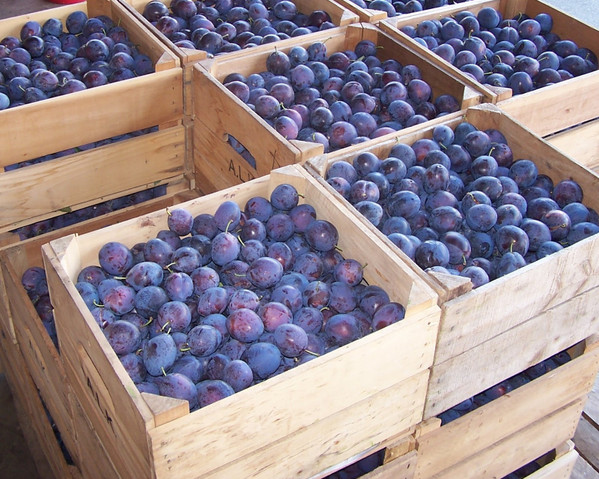Posted by Jeff Pauls on 28th Aug 2018
Plums: Get Some
Are you enjoying the fresh plums this summer? Plums are so delicious! The plum, as do all fruits, has a long and varied history. Where in the world do they come from? Have you ever wondered about the difference between a prune and a plum? The plum is a wonderful food and has an interesting story to tell.
When I left Dallas, OR in 1988, I had no idea I was leaving what was once known as “Prune City.” First settled in 1840, and called “Cynthian" or "Cynthiana,” Dallas thrived as fruit production and lumber mills became the core of the economy. “By 1910 the city had a population of 2,124 and had become the shipping and processing center for the region's flourishing prune industry.” (POLK COUNTY, OREGON AN HISTORIC CONTEXT 1811-1941) Growing up, I had seen the old prune dryers on the outskirts of town. On our way to Salem in the family car, I remember orchards whizzing by as I gazed out the car window. In fact, later, as a teen, I worked for my dad’s cousin in his cherry orchard for a couple summers. Little did I know, that 30 years later I’d be researching my hometown to talk about plums.
Plums & Prunes
So are prunes dried plums? Or is there such a thing as a prune that starts as a prune and is always a prune? So you probably already know this, but there is definitely a difference. “When dried, plums are called prunes, but the prune fruit comes from a different type of plant than plums. Although of the same genus (Prunus) as plums, which makes it a type or variety of plum, prunes have pits that are easier to remove from the flesh unlike all other types of plum. Aug 9, 2011” (DifferenceBetween.net) And according to California Dried Plums, “All prunes are plums, but not all plums are prunes. Prune plum varieties have very high sugar contents that enable them to be dried without fermenting while still containing the pits.” For more on prunes, be sure to check out the website on dried plums I just quoted. It has a lot of great information.
Two Popular Varieties
There are many kinds of plums. However, the two most commonly sold seem to be the Japanese plum and European plum. The major difference between the two groups seems to be when they bloom and the climates they tolerate. According to Robert L. Andersen and Jay Freer of Cornell, who wrote Plum Variety Picks for New York, “Japanese plums bloom earlier than any other stone fruit crop making them more frost susceptible, and their trees are generally less tolerant to dormant cold than most European plums. European plums, “...formerly known as “prunes,” spans a 10-week ripening period from mid-July to late September. Many shapes, flavors, and textures are represented. Good eating quality, regular cropping, and good tree longevity were the primary traits used as a basis for their recommendation.” Another difference to note is taste and appearance. I’ve broken down the differences in the following table for easy comparison.
The Orange Pippin Fruit Trees website has an excellent article fully describing these distinctions. It also includes information about all the other Prunes species, including Prunus persica, or more commonly, peaches and nectarines.
Nutrition
Obviously, as we continue to hear, fruits and vegetables, have huge nutritional value. George Mateljan, of WHFoods, outlines some of the benefits in his Plums & Prunes post. He notes the antioxidant protection from the naturally occurring phenols in plums. Also of note, is his mention of vitamin C which promotes iron absorption. Another top hit for plum nutrition is the website, Organic Facts which notes in their 21 Best Benefits of Plums article that “They are also a good source of vitamin B1 (thiamine), B2 (riboflavin), B3 (niacin), B-6, and vitamin E (alpha-tocopherol). The minerals present in them include potassium, fluoride, phosphorus, magnesium, iron, calcium, and zinc. They also supply dietary fiber and offer very low calories without any harmful fats.”
Plums - Get Some
If you’ve tasted some of our plums, come on back for more! If you haven’t had any yet, what are you waiting for!? Come on over and get some! We’re all here and would be happy to help you with anything you need. Looking forward to seeing you! And if you missed our earlier post on plums, be sure to look it up for some really nice recipes!

